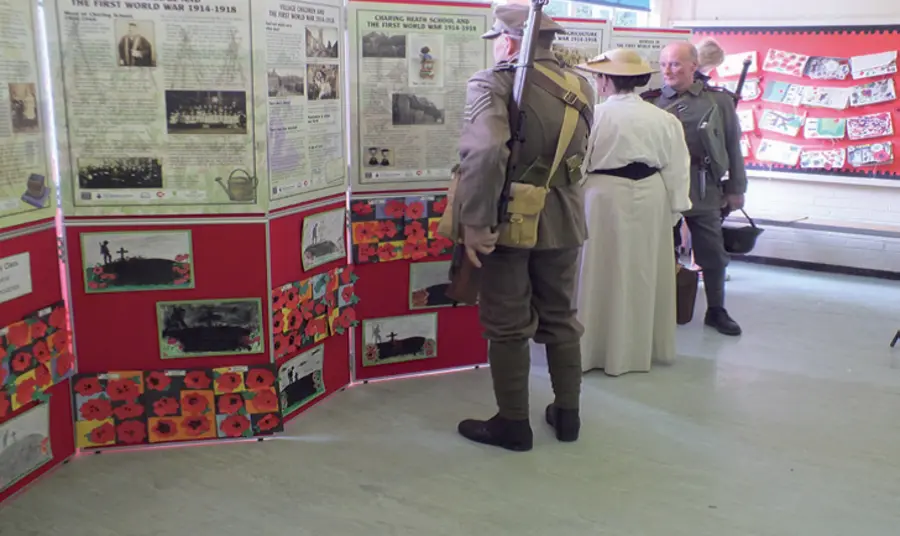
First World War: Then and Now
Charing and District Local History Society used local archive material to research the area’s First World War history, and built on this using online resources and other printed material. Fifteen families who had relatives in Charing during the First World War were contacted, and provided memories, memorabilia and photographs.
Local primary school children also undertook their own research into the First World War. Inspired by a visit to see a performance of War Horse, they wrote letters from the point of view of soldiers and poems and essays based on their experience.
This research formed the basis of exhibitions at 14 venues, including the parish hall, the surgery, churches, the village library, the railway station, the post office and local pubs. Each venue had a different theme, such as histories of the soldiers who died, VAD hospitals, schools and children’s lives and life in the Parish before the war. These exhibitions lasted for several weeks during the summer of 2014, including two open weekends with additional displays and events. In total, 61 panels were created which were produced by a local designer and artist, who volunteered their expertise and time to the project.
Organisations from across the Parish got involved. Shops displayed information about their histories in their windows. The Parish Council spruced up the cemetery and planted poppies beside all those graves commemorating men who died in the war, and The Charing Gardeners Society spruced up the communal areas of the village for the event. To make the open weekends livelier, extra events and displays were put on by pupils, staff and parents of Charing Primary School, the Charing Guild of Players and some outside re-enactors. Exhibits and artefacts were displayed, such as a surgeon’s equipment used at the front. An introductory talk was given on the context of the war.
Seven of the exhibition venues still have permanent displays.
Following the open days, the information was uploaded to the History Society’s website. Extracts of oral histories taken in earlier decades were transcribed and are available through the History Society.